Four Quick Tips for Getting the Most Out of 1Password
A handful of useful recommendations for newbies and veterans alike
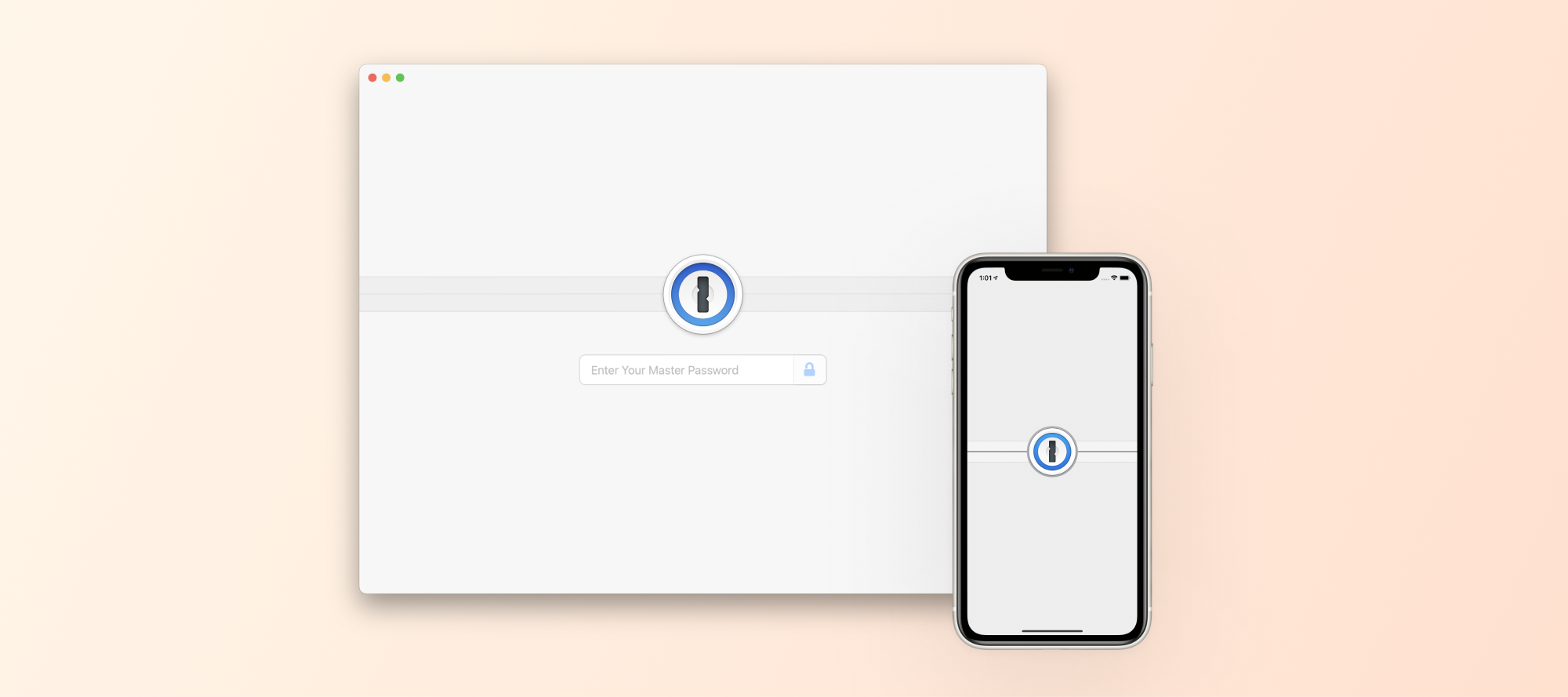
I’ve been using and sharing 1Password for an awfully long time now, and I wanted to gather a few tips that can meaningfully improve your experience of the service.
These aren’t hidden features, but if you’re new or haven’t spent much time digging into the settings you may not be aware of them yet.
Let’s start with the simplest.
1. Memorize the Keyboard Shortcut for AutoFill in Desktop Browsers: Cmd + \ or Ctrl + \
No matter which browser you use, once you’ve installed the 1Password extension you can use this keyboard shortcut to automatically fill in your login credentials.
On macOS devices, it’s Cmd + \ and on Windows machines it’s Ctrl + \.
Once you’ve got that committed to memory, signing in becomes a single-step process—no switching apps or copying and pasting required.
If you’d rather use a different shortcut, you can customize it from the desktop app’s Preferences in the General tab.
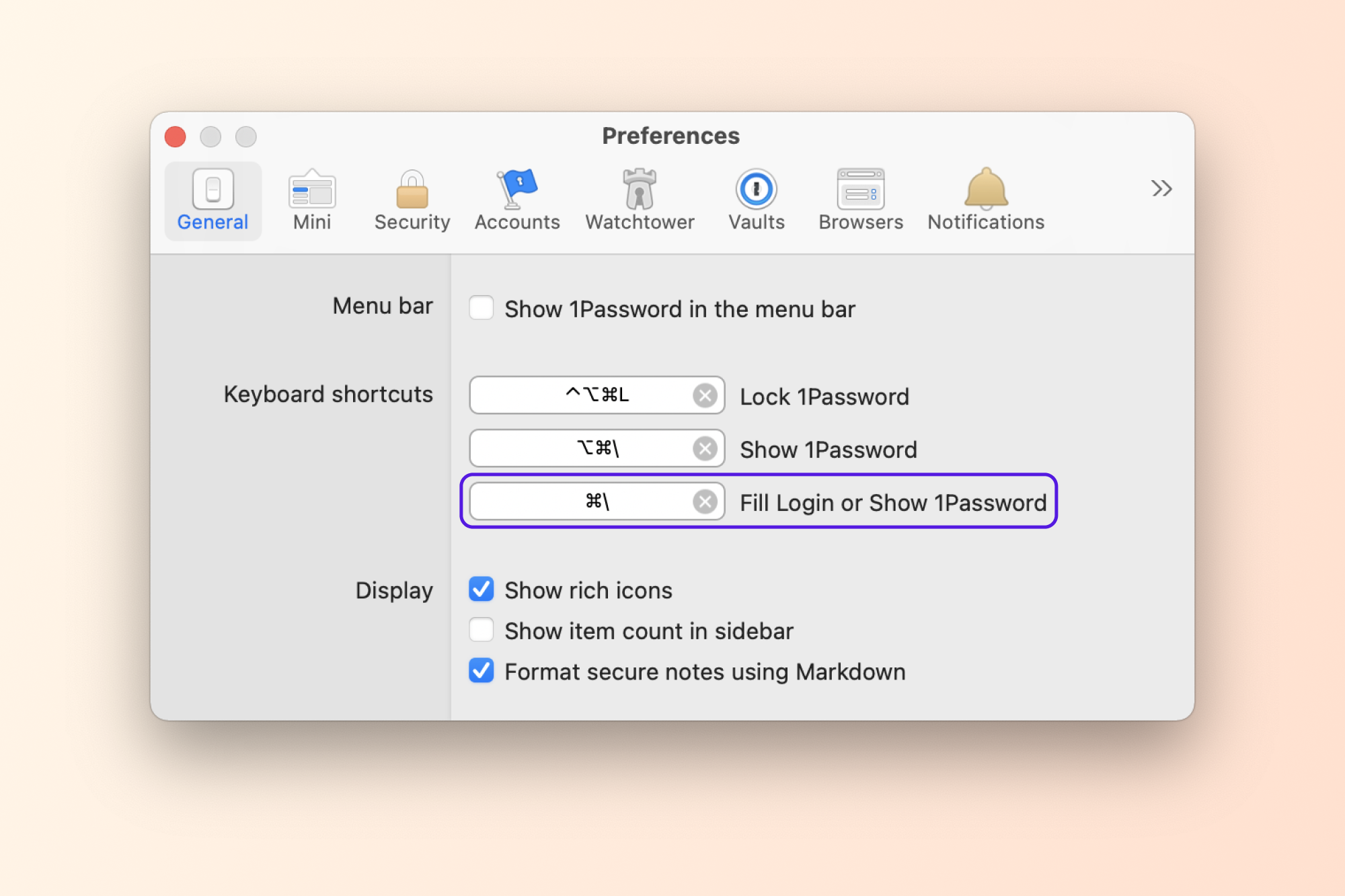
2. Set Up Biometric Unlock
If your phone offers either touch or secure facial recognition technology for unlocking, you can set 1Password up to unlock using those biometric signals. If you’re using a recent Mac with a Secure Enclave chip, you can also use Touch ID and/or your Apple Watch to unlock 1Password.
In the 1Password mobile app, navigate to the Settings tab and then into Security. There, you’ll see a toggle for Touch ID or Face ID depending on your hardware (or a similar equivalent if you’re on a compatible Android device).
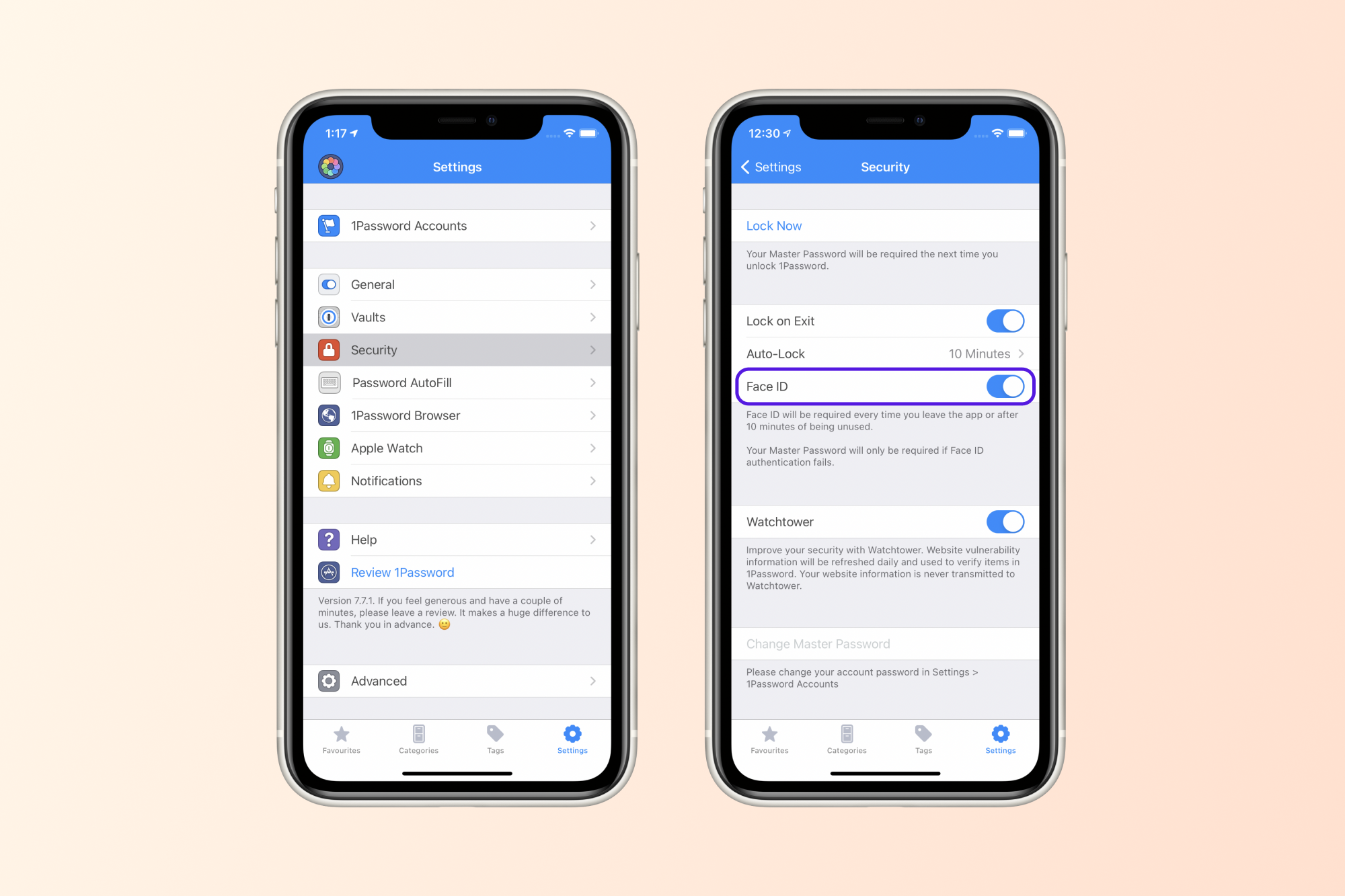
This saves you from having to type your master password in each time.
What I’ve noticed is that some people don’t realize this is a possibility, and they get so frustrated by typing in their master password that they change it to something shorter and simpler to make typing it faster. This makes your password vault more vulnerable, so don’t do that.
With biometric unlocking, you can access your credentials with a glance or tap, which I find most delightful for the AutoFill extension.
Whenever I need to log in, I simply open the AutoFill extension; it authenticates using Face ID on my iPhone, and with a single tap I’m signed in securely.
Speaking of AutoFill…
3. Turn on Auto-Copying of One-Time Codes and Clipboard Clearing
One-time codes are temporary numbers that change every thirty seconds or so, generated by an app or delivered over SMS.
You start using them when you enable two factor authentication for services that support it. They work alongside your password when logging in to prove that you are really you. True two-factor authentication and the role one-time codes play are topics for an upcoming article, but in general it’s always a good idea to enable and use multi-factor authentication when it’s offered.
If you have your one-time codes generated in 1Password for logging into sites more conveniently, you can set the app to automatically copy them to your clipboard whenever you log in.
From the Settings tab in the 1Password mobile app, go to the Password AutoFill section and toggle the switch to Auto-Copy One-Time Passwords (you’ll need to enable notifications for this to work).
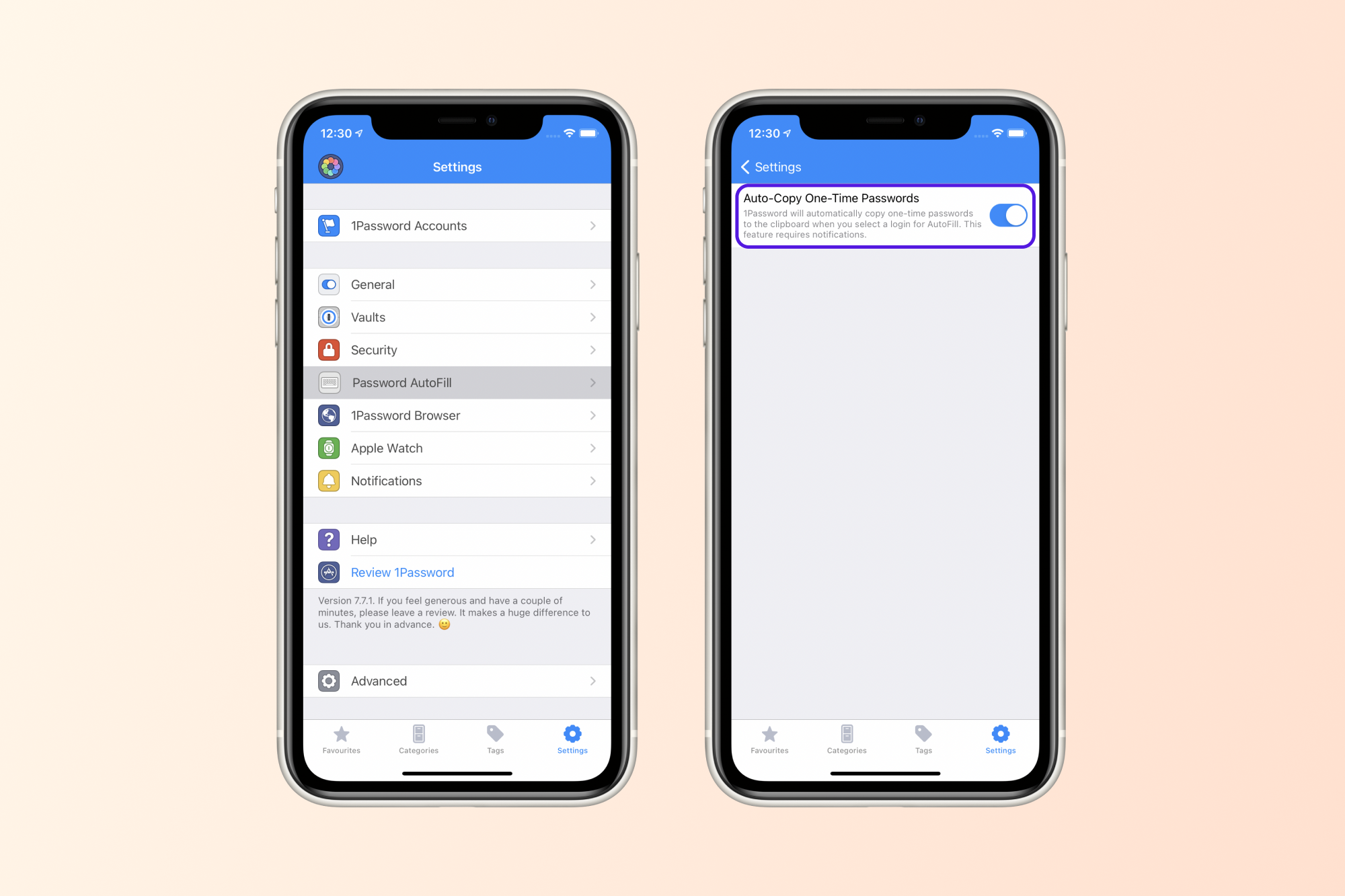
This makes logging in incredibly quick: all you have to do is open the AutoFill extension and 1Password handles the rest for you. It unlocks immediately using the biometric approach we set up in the previous tip, fills in the username and password, and copies the one-time code to your clipboard so you can simply paste it in.
The last piece of this puzzle is telling 1Password to automatically clear the clipboard so you don’t accidentally paste sensitive information into a different app or otherwise leave it lying around where someone could get at it.
To do this, go back to the Settings tab but this time head to the Security section again. Near the bottom, you’ll see the option to Clear Clipboard—toggle that on and you’re all set!
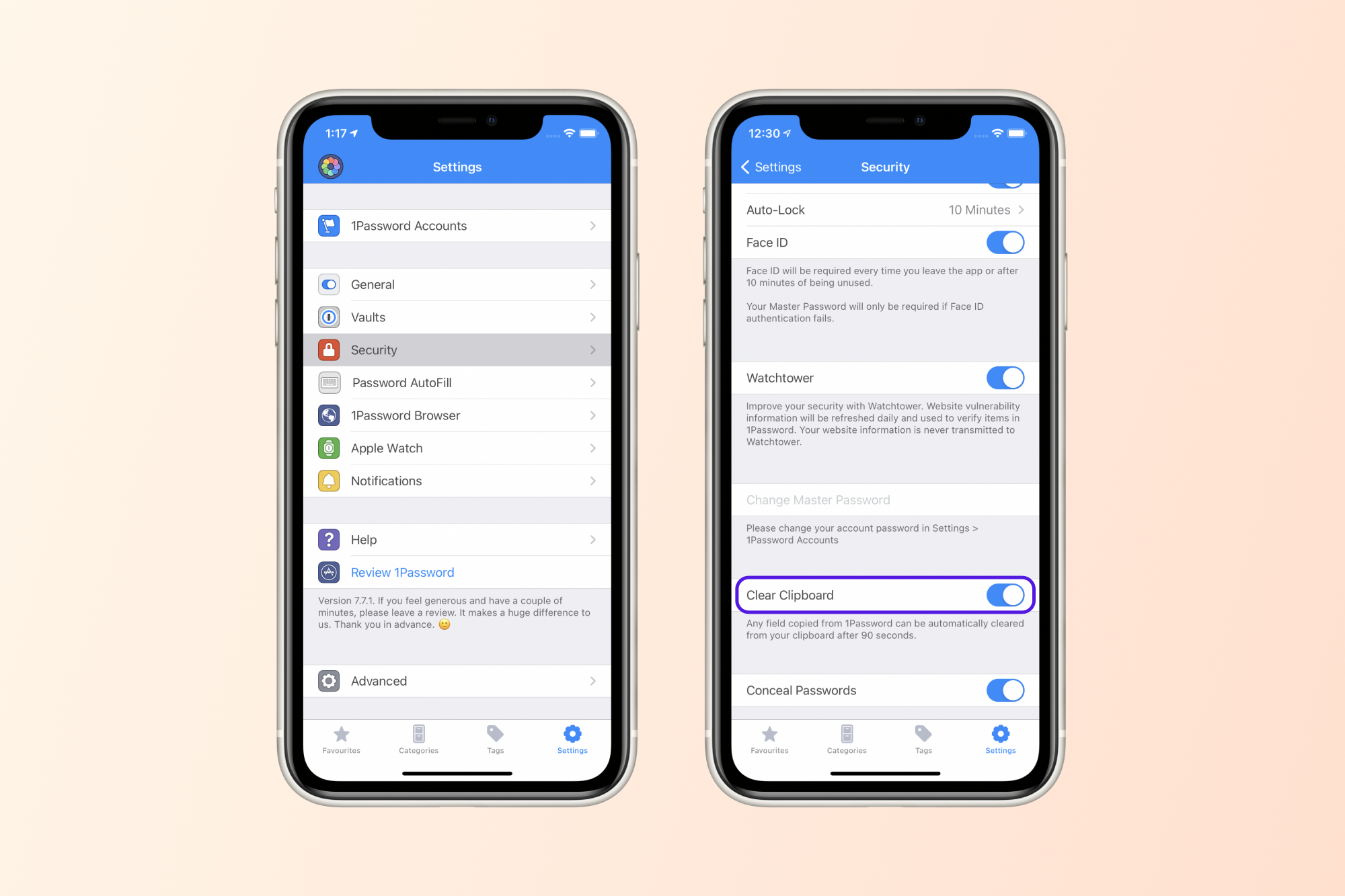
4. Update AutoFill
If you’ve ever added or updated some credentials and then gone to use them via AutoFill and found that they aren’t showing up, this tip is for you.
1Password maintains an index of credentials for AutoFill that updates itself periodically, but if you try to use an entry before the database has updated to reflect the change, you’ll run into trouble. Luckily, you can manually update this index at any time.
Back in the Settings tab again, simply navigate to the Password AutoFill tab and you’ll see a brief banner above the toggle that says “Autofill Passwords Updating…” Once this finishes, the index has been refreshed and all your latest changes will be visible in the AutoFill extension.
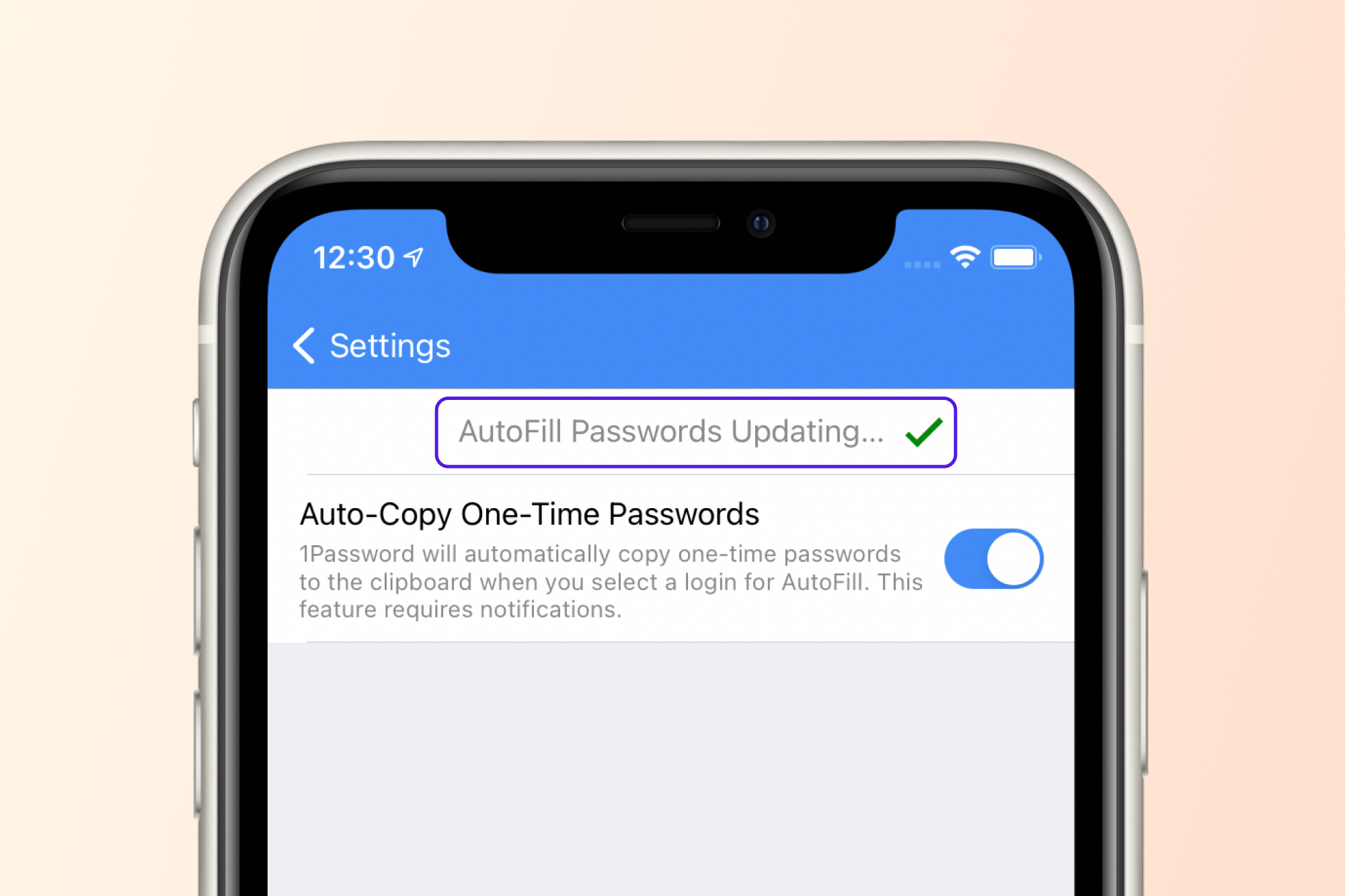
Problem solved!
Eight Years and Counting
I’ve been using 1Password for nearly a decade now, and it’s always the first thing I install on a new device. It’s become a default in my technological lifestyle in a way that few (if any) other apps or services have ever achieved.
I hope the tips above help you enjoy 1Password as much as I do!